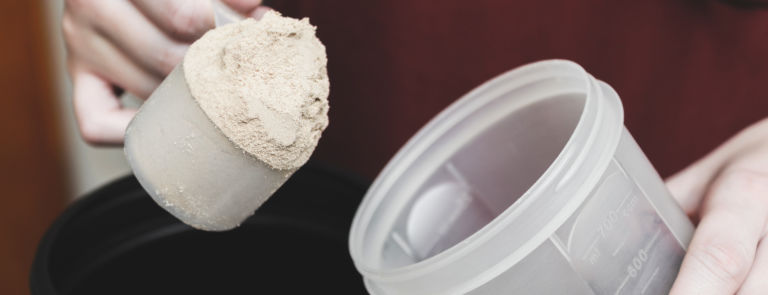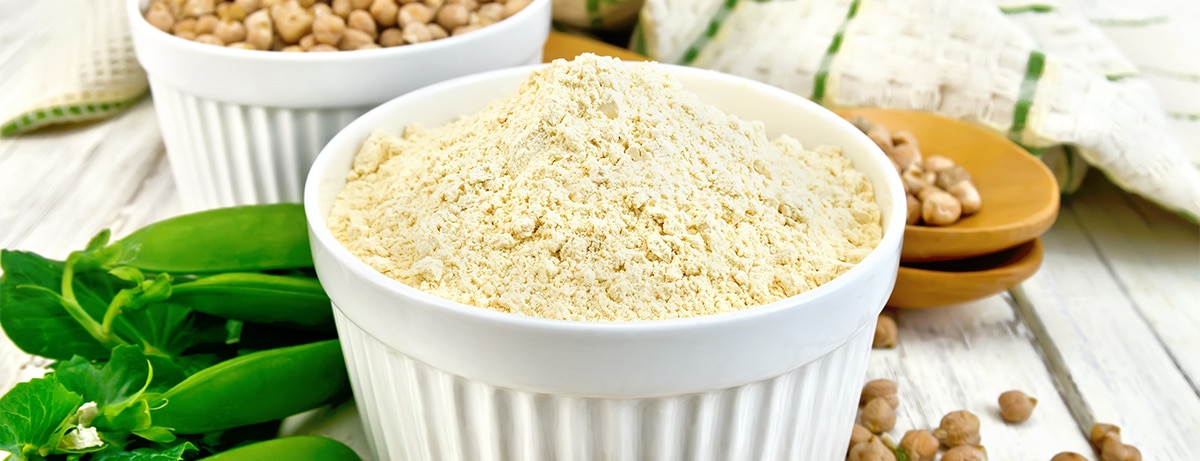10% off £35
Casein benefits: Uses & whey protein

It’s thought that one in four of us have bought a nutrition product in the last three months. In fact, almost half of those that purchase nutrition products use them as a part of their daily meal planning.1
Whether you’re a fitness fan or a budding gym guru, it’s not always easy to know how to get the most out of your workouts.
Casein is becoming an increasingly popular choice for those looking for protein support, especially as an alternative to whey.2
If you’re wondering whether to add a casein protein powder to your nutrition plan, we’ve got everything you need to know about casein below.
Casein FAQs
Like whey, casein is a type of protein from cow’s milk.
Milk contains two different proteins: whey and casein. Generally, casein makes up about 80% of the milk protein, whilst whey makes up the remaining 20%.3
Casein is a high-quality, slow-release protein that contains many Essential Amino Acids (EAAs), which your body can’t produce on its own. These EAAs are crucial factors in helping your body grow and repair muscles.
So, it is no wonder that most people use casein protein to support their protein intake and help them recover from their workout routines.4,5
Casein is usually taken as a protein supplement to support fitness and nutrition goals.
There are several reported benefits to using casein, although it’s always worth bearing in mind that research is still ongoing.
Some casein benefits may include:
- Improved muscle mass6
- Higher muscle mass7
- Feelings of satiety 8
- Increased strength9
- Improved metabolic rate10
It’s a good idea to remember, though, that supplements can’t replace a healthy and balanced diet.
If you’re getting the right amount of protein from your diet, you may not need to include a casein protein powder in your meal plans.11
Protein is a vital part of our daily diets, as we need it to help our bodies repair cells and create new ones. The average adult needs around 0.8g of protein per kilogram of their body weight every day.16
Generally, most people can get enough protein each day through their diet. But, if you find yourself not hitting your protein needs, taking up to 30g of casein per day will be more than enough.
So, when should you take casein?
Well, some people suggest that while whey protein is a better choice before and after workouts, casein is best before bed as your body then has more time to metabolise the protein.17,18
Casein vs whey
Casein or whey protein? That is the question.
While similar, the main difference between whey and casein is that your body processes these supplements quite differently.
Casein is a slow-release protein, which means it takes longer for your body to digest and absorb the amino acids. On the other hand, your body digests and absorbs whey proteins faster.
Researchers in a study into the role of milk proteins in muscle support found that the extended digestion period meant casein fed cells with essential amino acids at a lower level over a longer period. This resulted in an improved net protein balance, which is key for muscle growth and retention.12
However, both whey and casein provide a range of reported health benefits and promise to deliver a variety of different results.
Which you choose is really up to personal preference and your individual goals.13
Casein nutritional profile
Casein and whey protein both have very similar nutritional profiles.
It’s worth remembering that different products may have different nutritional values, particularly if they have other ingredients added.
To be sure that your chosen casein protein fits with your overall goals, check the label carefully.
Typically, a 34g serving of casein protein contains:
| Calories | 120kcal |
|---|---|
| Fat | 1g |
| Carbohydrates | 4g |
| Protein | 24g15 |
How to take casein
If you’re keen to try casein but not sure how, using it in a protein shake or drink is a great start!
You can usually buy casein protein powder in a range of different flavours, which you can prepare with water, milk and other ingredients to make a delicious casein shake.
Why not try mixing a scoop of casein protein powder with some frozen berries, a banana, and some milk for a fruity, berry shake? Or get your greens in by mixing your protein with a handful of spinach!
For more inspiration, check out our DIY protein shake recipes, to find step-by-step guides to some of our favourite protein shakes.
The advice in this article is for information only and should not replace medical care. Please check with your GP or healthcare professional before trying any supplements, treatments or remedies. Food supplements must not be used as a substitute for a varied and balanced diet and a healthy lifestyle.
Last updated: 3 January 2023
- https://www.mintel.com/press-centre/social-and-lifestyle/sports-nutrition-bulks-up-uk-market-sales-rise-by-27-in-two-years-as-one-in-four-brits-use-the-products
- https://www.businesswire.com/news/home/20181022005433/en/The-Global-Market-for-Casein-Caseinates-2018-2023-The-Growing-Demand-for-Protein-Rich-Food-is-Augmenting-Growth---ResearchAndMarkets.com
- https://www.ncbi.nlm.nih.gov/pmc/articles/PMC2039733/
- https://pubmed.ncbi.nlm.nih.gov/3356636/
- https://pubmed.ncbi.nlm.nih.gov/16937979/
- https://academic.oup.com/ajcn/article/89/3/831/4596720
- https://academic.oup.com/ajcn/article/89/3/831/4596720
- https://pubmed.ncbi.nlm.nih.gov/10838463/
- https://academic.oup.com/ajcn/article/89/3/831/4596720
- https://www.nhs.uk/live-well/healthy-body/body-building-sports-supplements-facts/
- https://pubmed.ncbi.nlm.nih.gov/20368372/
- https://pubmed.ncbi.nlm.nih.gov/24724774/
- https://pubmed.ncbi.nlm.nih.gov/22330017/
- https://www.ncbi.nlm.nih.gov/pmc/articles/PMC3879660/
- https://www.ncbi.nlm.nih.gov/books/NBK56068/table/summarytables.t4/?report=objectonly
- https://www.healthline.com/nutrition/casein-vs-whey#which-one
- https://www.exercise.com/learn/what-foods-contain-casein-protein/
- https://pubmed.ncbi.nlm.nih.gov/17908291/














